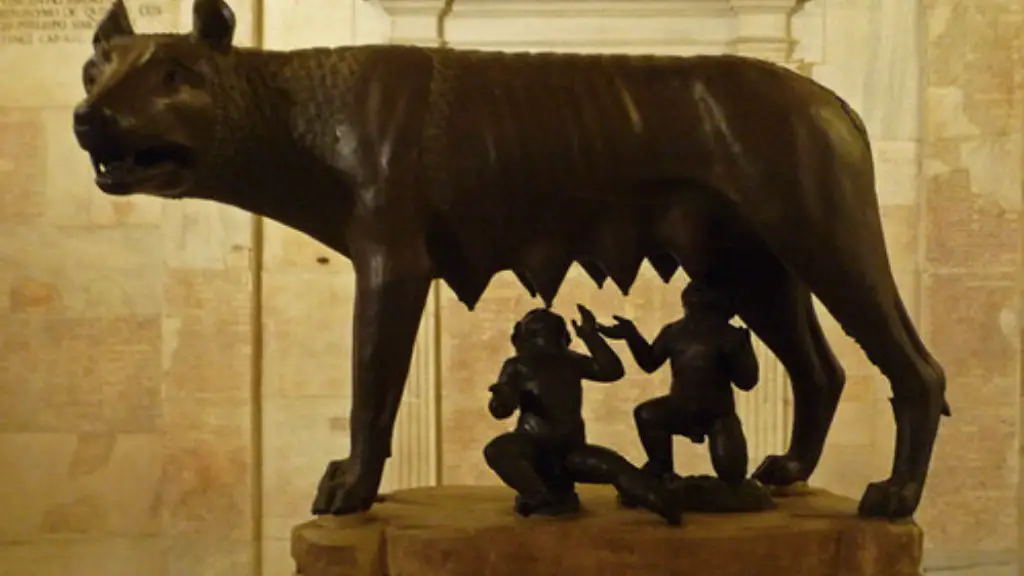The olive tree has been a symbol of peace, life and abundance throughout history. Ancient Romans were particularly fond of the fruit, and olives were an essential part of their diet. In Roman times, the olive was widely used for both culinary and medicinal purposes. As the Roman Empire spread across Europe, the olive tree’s presence grew. The olive tree was revered in Rome and it was believed to represent power, luck, and fertility. It was associated with the god, Saturn, who was the god of agriculture.
The use of olives in Roman cuisine began during the time of the Republic. Olives were used to flavor a variety of dishes, including salads, stews, sauces, and breads. They could be eaten raw or cooked. Olives were a source of vitamins, minerals, and fiber, as well as essential fatty acids. Olives were also used to substitute meat in dishes, making them a popular and affordable food choice for the everyday Roman. Olives were also used as preserves, sauces, and even pickles. Olives were also used for cooking oil and for flavoring olive oil.
The medicinal uses of olives in Rome went beyond using the oils and juices. The Romans drank olive oil to treat digestive problems, skin disorders, and even headaches. Olives were believed to have healing properties and were used to treat various other illnesses, including sores and ulcers. The leaves and bark of the olive tree were also used to make medicine that was believed to be an effective remedy for a variety of illnesses. Olives were used to treat breathing problems, eye infections, and respiratory infections, as well as to improve circulation.
While olives were used in Roman cuisine and medicine, their spiritual significance had an important role to play as well. Olives and olive branches were symbolic of victory and were waved during triumphs and parades. They were used in wedding ceremonies and were believed to bring prosperity and fertility. Olives were also used as offerings to the gods, and in the worship of Jupiter, the god of the sky, the olive tree was considered sacred.
In Roman times, olives were also used for their beauty benefits. Women applied olive oil to their hair as a conditioner, and women also used it to soften and lighten their skin. Olive oil was believed to be an effective cleanser and tonic that helped keep skin looking healthy and radiant.
The use of olives in Rome was widespread, and the olive tree and its fruit have a long and rich history in the Roman culture. Even today, olives remain an important part of the Roman diet, as well as being used in medicine, beauty products, and spiritual ceremonies. Olives may have changed over time, but their importance in Roman culture and cuisine remains.
In modern day
In modern day, olives are still used in the same way as in ancient Rome although in different forms. Olives are still used to flavor a variety of dishes and can be eaten alone as a snack or cooked into dishes. They are also used for cooking oil and for flavoring olive oil, as well as for preparing pickles, sauces, and even used in salads. Olives also contain vitamin A, vitamin E, riboflavin, calcium, and magnesium.
Medicinally, olive oil has proven to be a powerful and safe antioxidant and anti-inflammatory agent, and is used to treat heartburn, constipation, and digestive disorders. It is also used to regulate high blood pressure, protect against cancer, and aid in weight loss. Olives are also said to improve cognitive performance, promote a good night’s sleep, and have anti-aging effects.
Olives are also still used in spiritual ceremonies and are believed to bring peace, prosperity, and fertility. In addition to being associated with the god Saturn, in some cultures olives are associated with the gods Hera and Dionysus. Olives are also used in weddings, funerals, and religious festivals as a sign of luck, abundance, and peace.
Finally, olives are still used for their beauty benefits. Olive oil is still believed to be an effective cleanser and tonic that helps keep skin looking healthy and radiant. It is also used to condition hair and soften the skin.In modern day, olives still prove to be an essential part of Roman culture, cuisine, and beauty rituals.
Intercultural perspectives
The usage of olives in Roman times is an interesting topic both from an intercultural perspective and a historical one. In other cultures around the world, olives are also commonly used in cooking, medicine, ceremonies, and beauty rituals, although with some differences. Many cultures in the Mediterranean region, including those in Greece, Turkey, and Lebanon, also revere the olive tree and its fruit.
In the Levant region, olives are used to make tahini, a sauce made from ground sesame seeds. Olives are also used to make za’atar, a mixture of spices and herbs that are used to flavor meats, salads, and breads. Olives are also consumed as snacks in the Middle East and can be found pickled or seasoned with lemon, garlic, and herbs.
In the Mediterranean regions of Spain and Morocco, olives are frequently used for cooking, sauces, and pickles. Olives are also used in traditional medicinal formulas and are believed to aid in digestion, reduce inflammation, and reduce cholesterol. In addition, olives are used in beauty applications and are believed to reduce the appearance of wrinkles and dark circles.
In other cultures around the world, olives are also widely used. In Southeast Asia, olives are used in curries and soups. In Central America, a traditional preparation of olives involves pressing olives into small balls and seasoning them with garlic, chili powder, and lime juice. In India and China, olives are believed to have medicinal properties and are used to treat colds and coughs.
Conclusion
In conclusion, olives were widely used throughout history in Roman times, and even today, olives remain an integral part of Roman culture, cuisine and beauty rituals. Olives were used for culinary, medicinal, and spiritual purposes. Olives are also used in other cultures around the world, although with some differences.
Cultural influence
The influence of Roman culture on the use of olives can be seen in modern day. In many parts of the world, olives are used in similar ways and have similar spiritual, medicinal, and culinary meanings. The influence of the Roman culture on the use of olives is evident in their widespread use and in the fact that they have been revered throughout history.
This influence on the use of olives is still evident today. Olives are still used in a variety of dishes, are used in medicine, and are used in spiritual ceremonies.They are also used for their beauty benefits, as well as being a source of essential vitamins and minerals. Olives may have changed over time, but their importance in Roman culture is still evident.
Modern day usage
In modern day, olives are used in a variety of ways. They are used for flavor in dishes, cooking oil and to make pickles and sauces. Olives are also eaten as snacks, used to treat illnesses, and used in spiritual ceremonies. They are also used for their beauty benefits, such as to condition hair and soften skin. Olives are still an essential part of Roman cuisine, medicine, and culture.
Nutritional value
Olives have a high nutritional value, due to containing essential vitamins and minerals. This includes vitamins A, E, and B. Olives are also a good source of dietary fiber, essential fatty acids, and antioxidants. Olives are a healthy snack choice and can also be used to substitute for meats in dishes.
Health benefits
Olives have a variety of health benefits. They have been reported to reduce inflammation and regulate blood pressure. Olives are also believed to help prevent cancer, improve cognitive performance, promote a good night’s sleep, and have anti-aging effects. Olives are also a good source of healthy fats, vitamins and minerals, making them an important part of a healthy diet.





